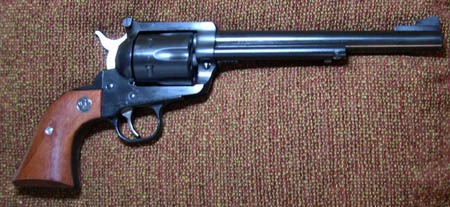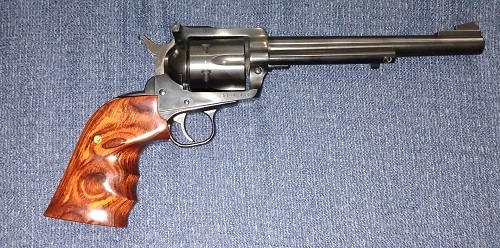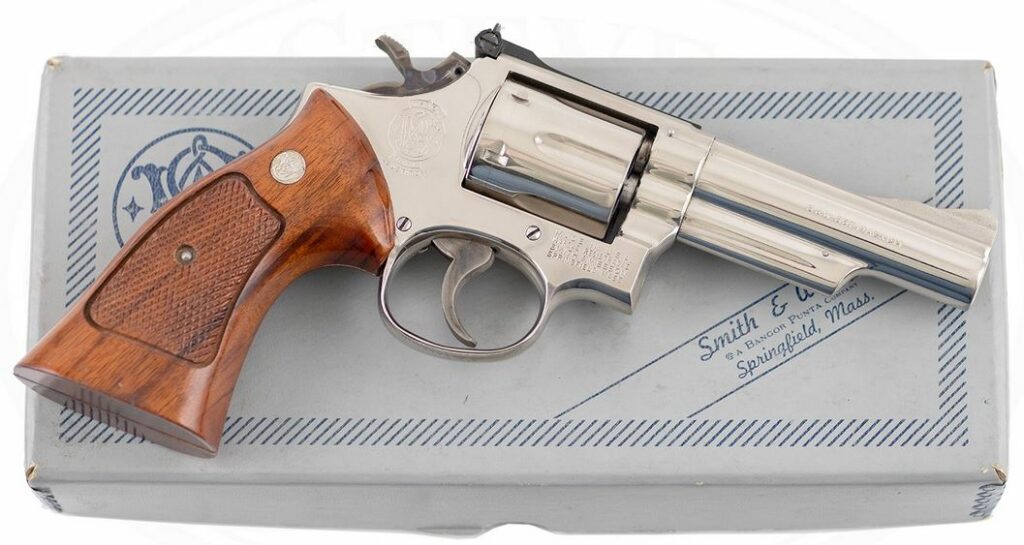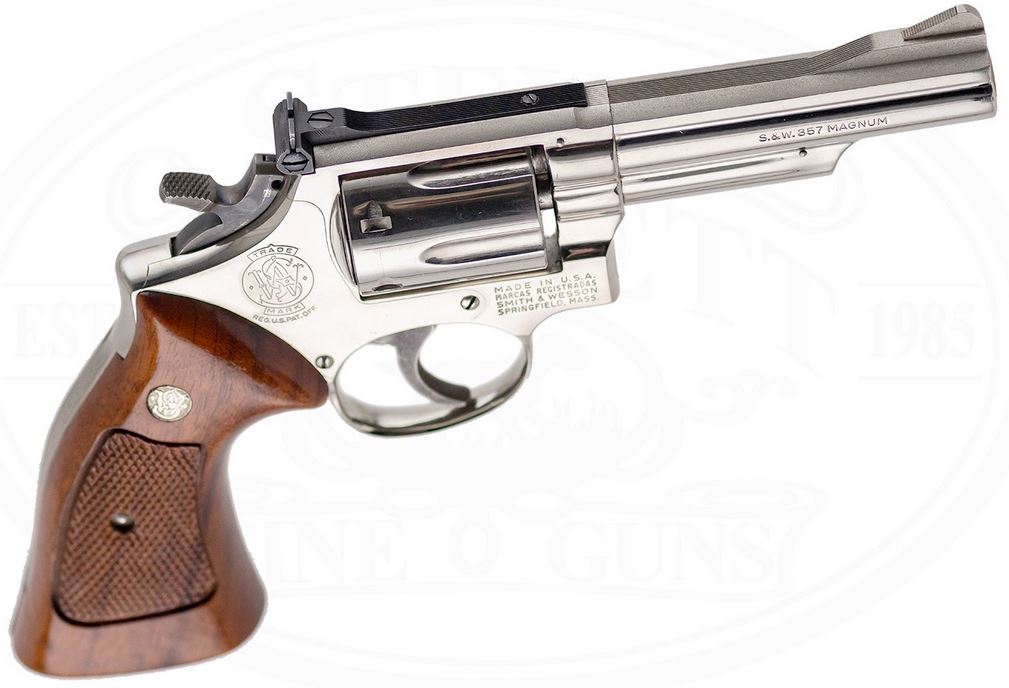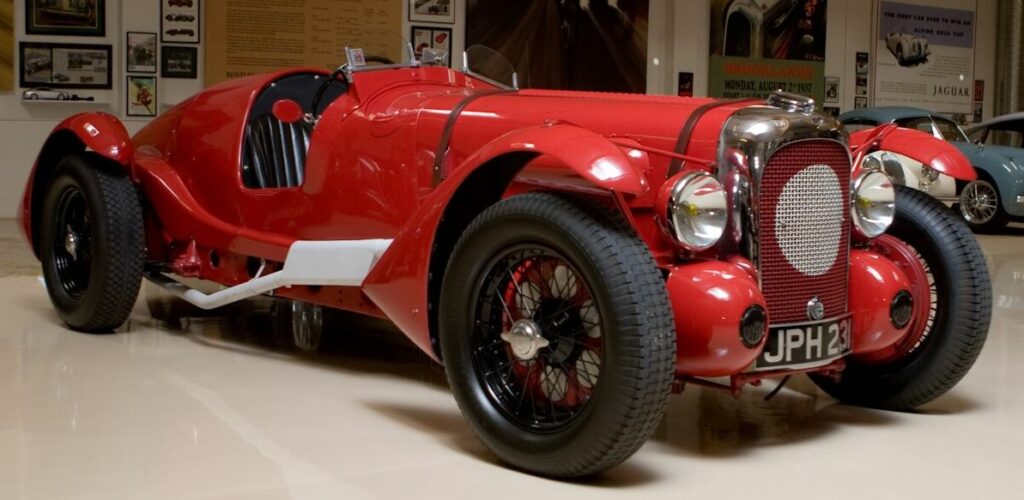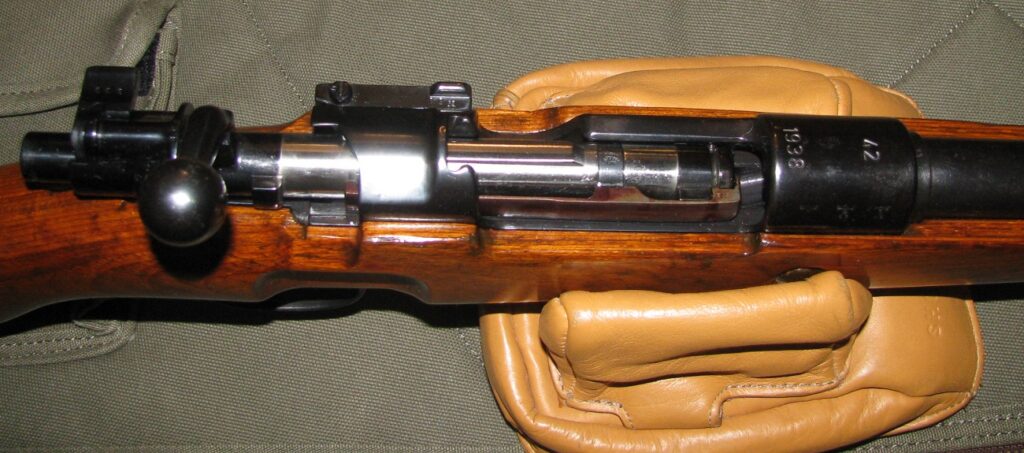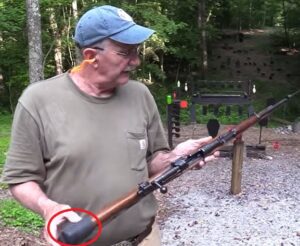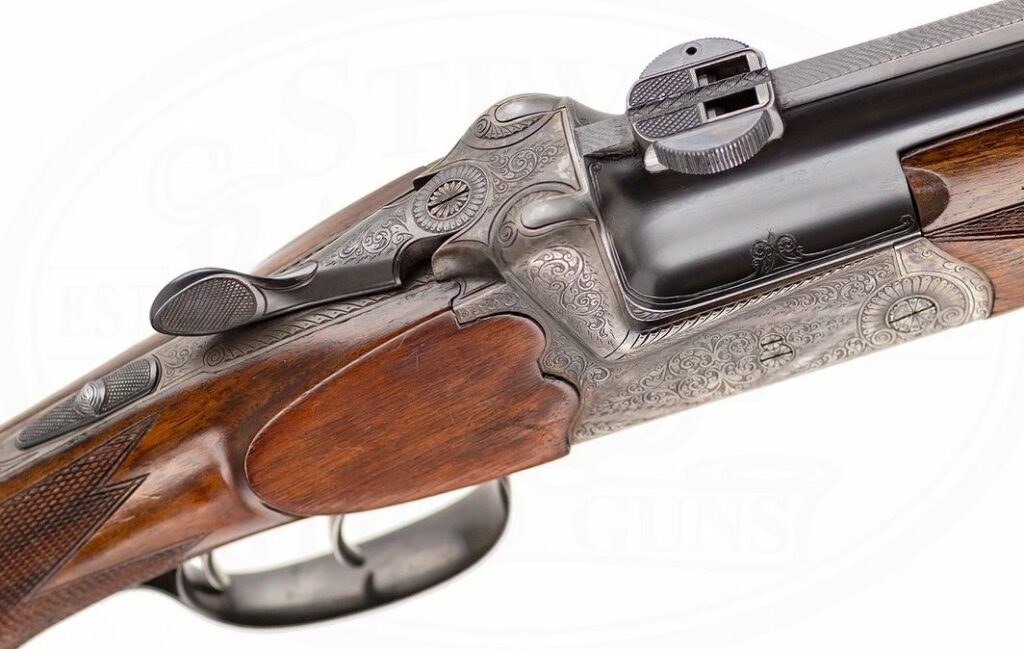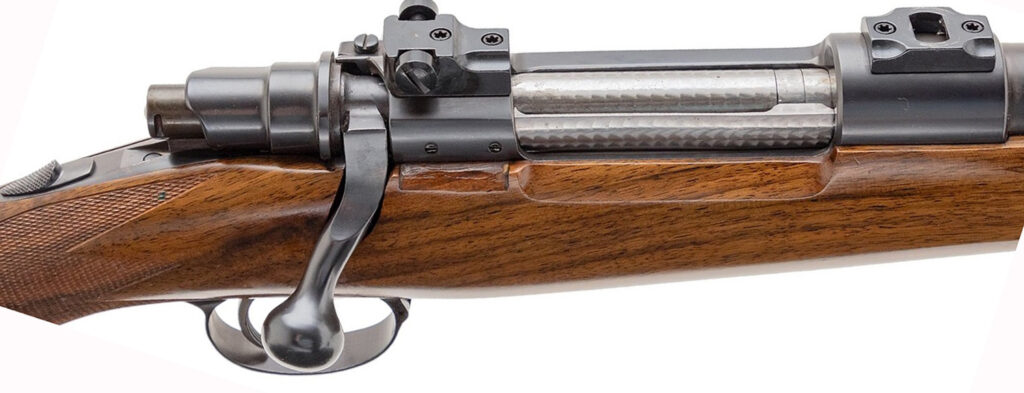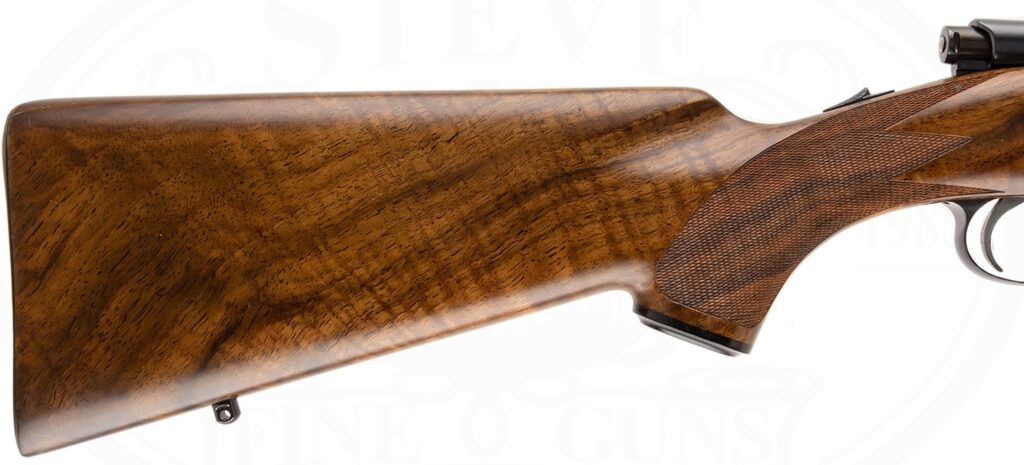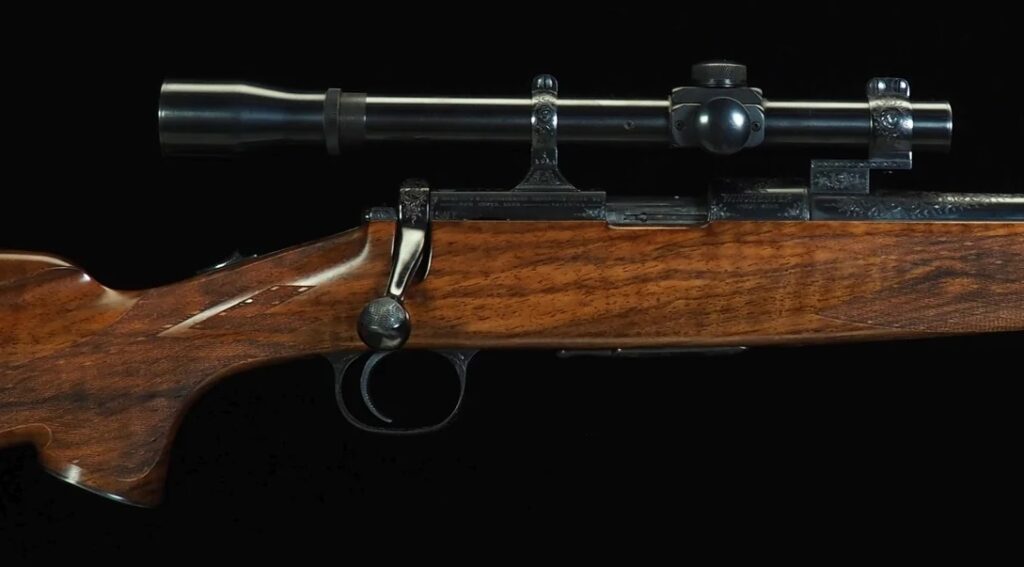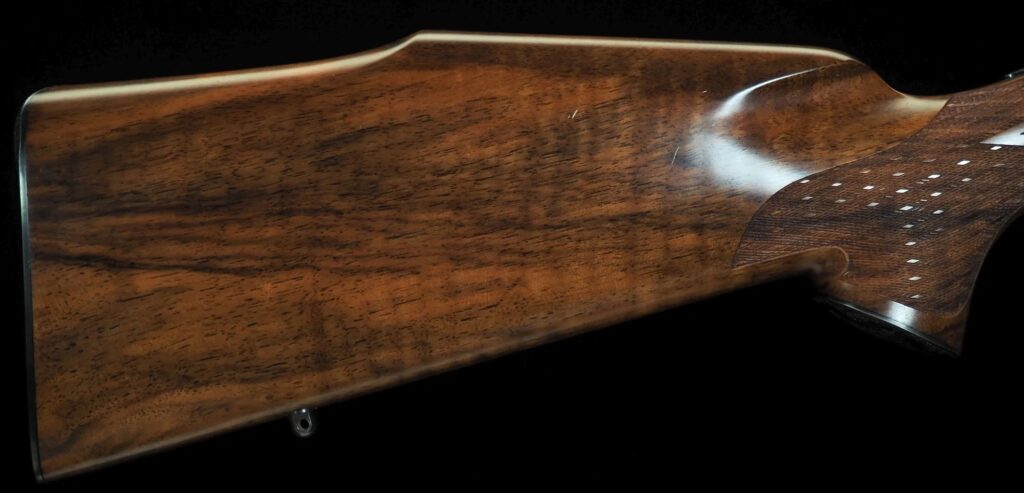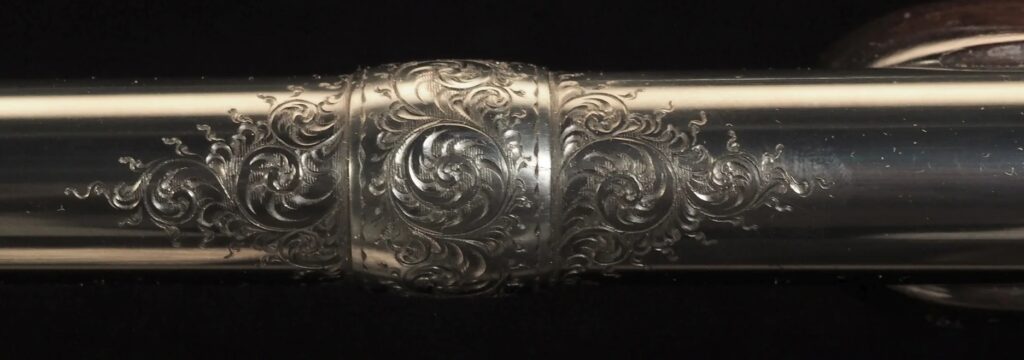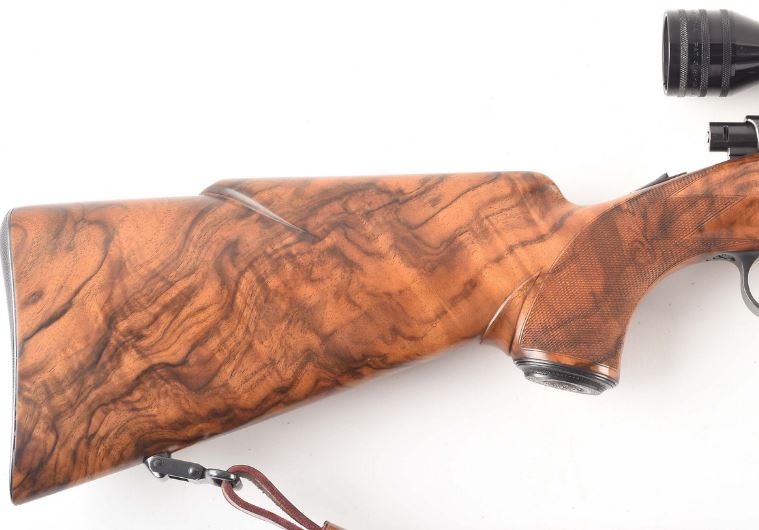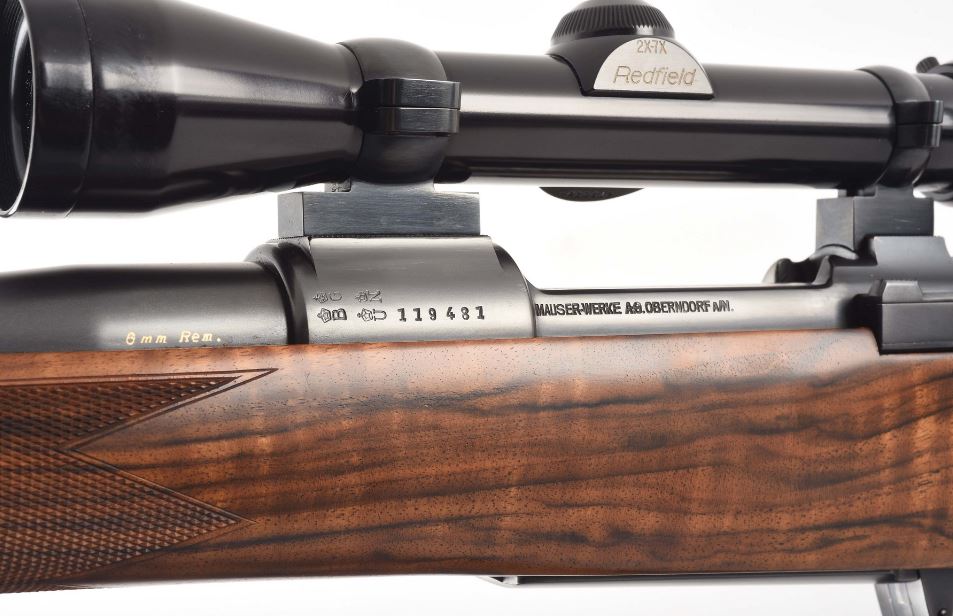I once heard a very cynical man describe engraving guns as akin to engraving a hammer or an anvil: “Looks good, doesn’t do nothin’ for it.”
In pure common sense, I agree with him. However, as someone who appreciates great skill and craftsmanship as much as anyone alive, I deplore such cynicism.
You see, art doesn’t have to be functional; it just has to excite.
And right on cue, we have this example from Steve Barnett (and right-click to embiggen and enjoy):
 Let me start off by looking at the lines of this Safari Custom rifle as a whole: without a single cut of engraving, that is one exquisite rifle: lean, curved in all the right places and just plain beautiful. Now let’s look at the engraving:
Let me start off by looking at the lines of this Safari Custom rifle as a whole: without a single cut of engraving, that is one exquisite rifle: lean, curved in all the right places and just plain beautiful. Now let’s look at the engraving:
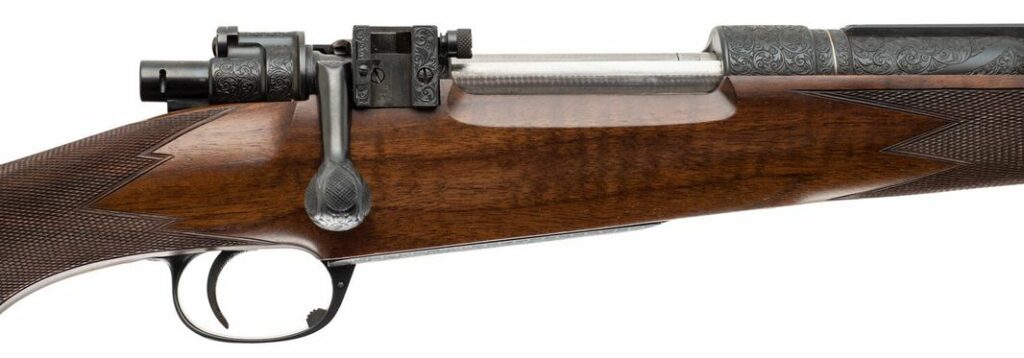

Good grief, that is so lovely, and so tastefully designed that it makes my heart race.
Now let’s look at the price: $13,500.
Before anyone gets to having palpitations and fainting fits, allow me to point out that a new Mauser M98 Diplomat in the same caliber runs for: $15,000.

Functionally, it is identical to the custom rifle; aesthetically, it’s not even in the same zip code, let alone ballpark. Lexus, meet Lambo.
And finally, I know that someone’s going to say that they’d be too afraid to take the Safari Mauser out on an African safari, lest they scratch or somehow mar the finish. Me, I say phooey:
- dropping the rifle out of an unlatched gun case onto concrete and scratching it up: a terrible accident
- scratching the rifle on some ugly African thorn tree while stalking a lion or Cape buff: a battle scar.
And yes (sigh), I know you can get a Ruger African rifle (in .375 Ruger, though) for a little more than a tenth of the cost of both the above Mausers.
Oscar Wilde once described a cynic as a man who knows the price of everything and the value of nothing. I think the old pederast nailed it.

